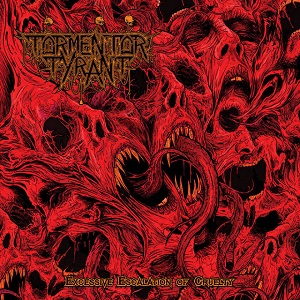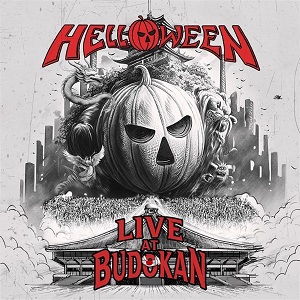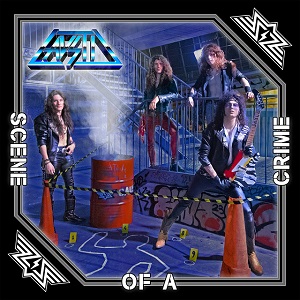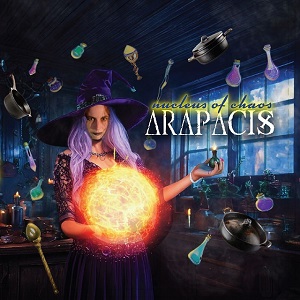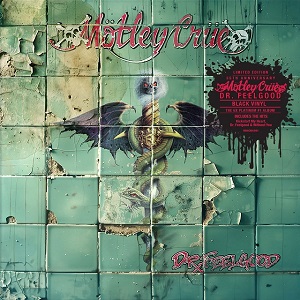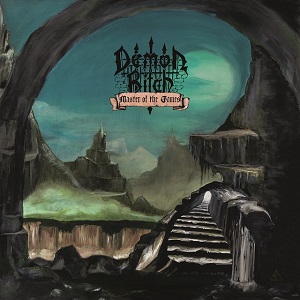GEORGE HARRISON’s Living In The Material World Album Celebrated With New 50th Anniversary Editions
September 20, 2024, 4 months ago

Living In The Material World, George Harrison’s highly praised second solo album of original music following The Beatles’ 1970 dissolution, recently marked its 50th anniversary. With lyrics underscoring his enduring exploration of spiritual themes, the album resonated deeply with audiences. Just five weeks after its May 1973 release, both the LP and its single "Give Me Love (Give Me Peace On Earth)" held the top spots simultaneously on the US albums and singles charts. Upon release, Rolling Stone described it as a "pop classic", a work that "stands alone as an article of faith, miraculous in its radiance."
The album’s success further solidified a winning streak that began with All Things Must Pass, the triple LP topped the US charts in early 1971. Later that same year, George organized two groundbreaking benefit rock concerts at Madison Square Garden in New York, aiming to raise both awareness and funds for the starving refugees of Bangladesh. The Concert for Bangladesh live album, another triple LP, became a commercial triumph and global bestseller, ultimately earning the prestigious Grammy Award for "Album Of The Year".

Lovingly overseen by Dhani and Olivia Harrison, Living In The Material World has now been completely remixed from the original tapes for a stunning suite of 50th anniversary releases. Remixed by triple Grammy Award-winning engineer Paul Hicks (The Beatles, The Rolling Stones, John Lennon), the new mix elevates the album with a sonic upgrade, delivering a sound that’s brighter, richer, and more dynamic than ever before.
Pre-order here. The first taste of the collection comes in the form of an acoustic version of “Give Me Love (Give Me Peace On Earth)" (Take 18) which is available now. Stream/download the song here, and watch a visualizer below. A video trailer for the upcoming release can also be found below.
Available November 15th, via Dark Horse Records/BMG, Living In The Material World 50th Anniversary Edition will be available in a variety of physical and digital formats including a Super Deluxe Edition Box Set.

Super Deluxe Edition:
Limited to 5,000 units globally, the Super Deluxe Edition box set features the album on 2LP (180g) and 2CD, which includes the newly remixed original album and a bonus disc containing 12 previously unreleased early renditions of every song on the main album. Additionally, the set includes a Blu-Ray of all album tracks and previously unreleased tracks in Dolby Atmos, and an exclusive 7” single of the never-before-heard recording of ‘Sunshine Life For Me (Sail Away Raymond),’ featuring Robbie Robertson, Levon Helm, Garth Hudson, and Rick Danko from The Band, alongside Ringo Starr.
Housed in a rigid slipcase, the box set contains a beautiful 60-page hardcover book curated by Olivia Harrison and Rachel Cooper, with unseen imagery and memorabilia from the era, handwritten lyrics, studio notes, and tape box images. Also included is a 12-page Recording Notes booklet, drawing from original Living In The Material World production notes, photographs, and reel-to-reel session tapes housed in the George Harrison Archive. For the first time, the Harrison archive team offers an in-depth, chronological account of the album’s creation, revealing insights that have never been shared with the public before.
Alongside the super deluxe format, the album will also be available on 2LP and 2CD Deluxe Editions, both of which pair new mixes of the original album with session outtakes. The 2LP Deluxe Edition will be presented in a gatefold sleeve with a 12-page booklet, while the 2CD Deluxe Edition comes in a Clamshell Box with two printed wallets, a 20-page booklet, and a poster. The main album will also be offered individually as a 1CD, 1LP, and limited edition 1LP color vinyl exclusive available from the official George Harrison online store (Purple Color Vinyl).
Of the release, Olivia Harrison shares: “I hope you revisit Living In The Material World or discover it for the first time, and as you listen, share George’s wish for himself and mankind….. Give me Love. Give me Peace on Earth.”
And Dhani Harrison comments: "Finally, we are overjoyed to present to you the 50th anniversary package of George Harrison's 'Living In The Material World'. For those of you who are just discovering this album; This record was released in service and with deep love for all our Brothers and Sisters around the world who populate this dualistic system we live in called Earth. Peace be upon all sentient beings.”
Living In The Material World, made in the midst of one of the most remarkable phases of his musical career, offered a brilliant glimpse of who its creator was, how unique his talents always were and how his search for certainty and truth beyond the everyday put him years ahead of his time.
The creation of the album began with a purposeful period at Apple Studios at the end of 1972, where, nearly four years before, The Beatles had done the conclusive work on the project eventually known as Let It Be. You can sense the prevailing atmosphere of these sessions in the music, manifested in flowing, sensitive musicianship, a lovely attention to detail and the album’s overarching set of themes. George not only sang but contributed almost all the guitar parts. He was backed by a tight-knit group of virtuosos, including drummer Jim Keltner, keyboard players Nicky Hopkins and Gary Wright, bassist Klaus Voormann and saxophone/flute player Jim Horn.
To really understand Living In The Material World, you have to go back to George’s experience of 1971 – a watershed 12 months full of events that would be explored in his songwriting. By that summer, he was deep into his response to the mounting humanitarian tragedy in Bangla Desh. After repeated shuttling between Los Angeles and New York and endless phone calls and meetings, he presented two concerts at New York’s Madison Square Garden. They combined performances by Ravi Shankar and three supporting musicians with sets led by George that also featured Ringo Starr, Eric Clapton, Leon Russell and Bob Dylan, among others.
“It was a very emotional period for me,” George later said, “because a lot of people had helped with its success, which made me very optimistic about certain things. At the same time, I felt slightly enraged because, let’s face it, the whole problem of how to solve [the Bangla Desh crisis] lies within the power of governments and world leaders, yet they choose to squander it on weapons and other objects that destroy mankind.”
His feelings would inevitably surface in his songs. In late 1971, while he was back in New York, he recorded several demos at the Plaza Hotel. They included an initial version of “Who Can See It,” and the earliest known recording of “Give Me Love (Give Me Peace On Earth),” complete with a very telling plea: “Help me cope with this heavy load.”
When recording sessions finally got started, these compositions were joined by an array of other new tracks. “Don’t Let Me Wait Too Long,” powered by a drum duet between Keltner and Starr, was one of the most straightforwardly joyous pieces of pop music George had ever recorded. “The Light Has Lighted The World” and “The Day The World Gets Round,” by contrast, were deeply emotional and insightful songs that went to the core of the album’s most profound ideas.
The remixing of the original LP gives new definition to these already accomplished and intimate recordings, while the extra material further highlights what a creatively fertile period this was for George. Thanks in part to the music’s newfound clarity, Living In The Material World resonates more than ever in 2024. Amid the noise of social media, the sense of someone yearning for enlightenment in a world of confusion rings loud and true. So does the undercurrent of the songs about the machinations and distractions of governments and politics. Moreover, in an era when meditation, yoga and so-called mindfulness have probably never been more popular, the fundamental points the songs raise align with the daily search for what is worthwhile. We all face the challenges of the material world throughout our lives, and in its own questioning, restless way, this album holds out the prospect of finding a way through them.
“The things most people are struggling for are fame or fortune or wealth or position – always, that’s their main ambition and desire in life, to be rich or famous or to have a good reputation, and really none of that is important because in the end, death will take it all away,” George later explained. But he was also keen to correct a common misapprehension: “I do not exclude myself, and I write a lot of things in order to make myself remember.”
Listening to the album in its new incarnations, all of these qualities are undeniable. It begins with a prayer and ends with a simple statement of the power of love. Its songs amount to a consummate self-portrait of an artist as a young man who was wise beyond his years, making sense of his life and the wider world. There’s not much music that sounds this yearning, intimate and spiritual, though we could boil those qualities down to something much simpler: true to its creator’s intentions, this is an album full of heart, and soul.
About the Material World Foundation:
Following the Concert for Bangladesh George created The Material World Foundation in 1973 to sponsor diverse forms of artistic expression and to encourage the exploration of alternative life views and philosophies as well as supporting established charitable organizations with consideration to those with special needs. George donated all publishing royalties from the album, in perpetuity, to the Foundation. The Material World Foundation continues to transform lives across the world today. For more information, head here.


